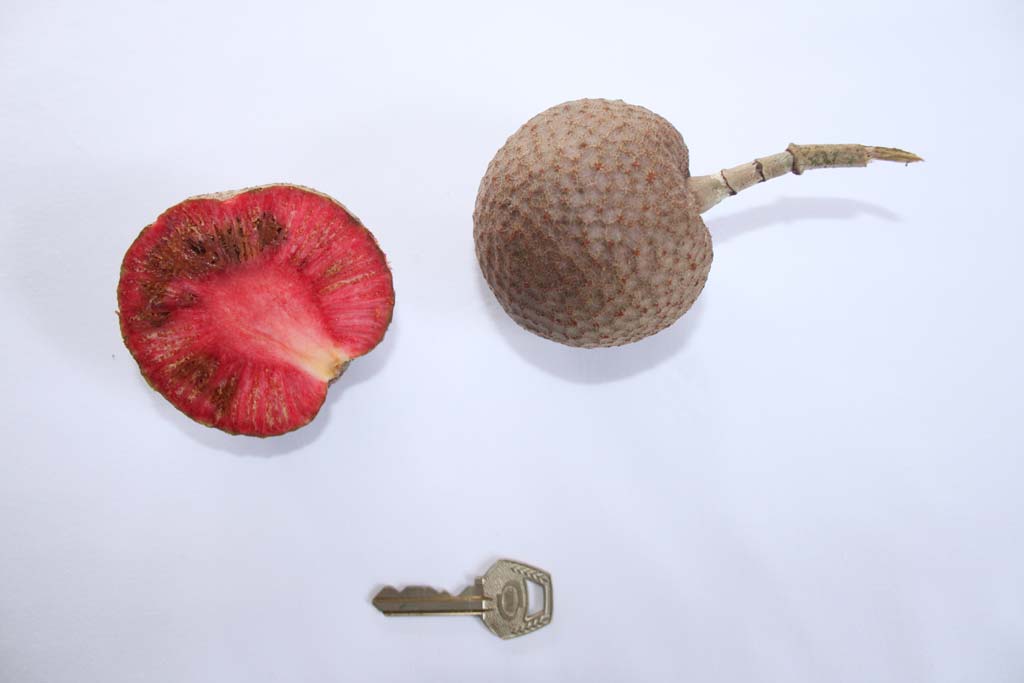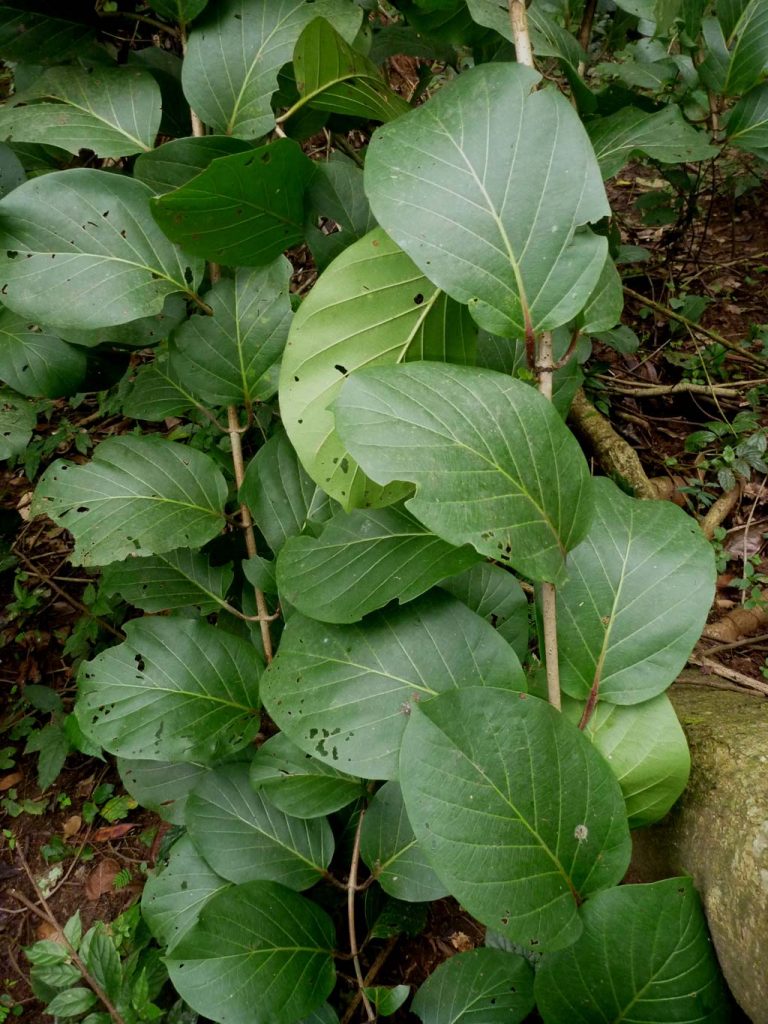
20 Jun Sarcocephalus latifolius
Scientific name: Sarcocephalus latifolius Sm. E.A.Bruce syn. Nauclea latifolia Sm.
Family: Rubiaceae.
Distribution/conservation status: locally common in moist, well-drained soils, often near watercourses, in savanna woodland. Not assessed by the IUCN Red List.
Common names: African peach (English), Odo-uburu (Igbo), Ogbesi, Ogbase (Yoruba)
Fruits/seeds: globose, brown, and pitted on the outside, containing numerous tiny pinkish-red seeds embedded in reddish-pink, strawberryscented, edible flesh.
Fruiting time: July – September.
Seed collection: collect ripe fruits directly from the tree, mash in a large container of cold water and decant floating debris when seeds have settled at the bottom. Strain to remove seeds and dry on absorbent paper before sowing.
Type of seed: orthodox.
Sowing method: mix seeds first with sand to ensure even distribution then sow in trays, covering thinly with sand.
Sowing medium: river sand.
Germination period: 14 – 21 days.
Germination percentage: 80%.
Vegetative propagation: take stem cuttings with at least 3 nodes, remove leaves and insert in sand with one node covered. Roots and new leaves develop in 7 – 14 days.
Growth/development: seedlings and cuttings require partial shade. Seedlings are planted out 8 weeks after germination; cuttings can be planted out after 6 weeks.
Notes: seeds from baboon faeces germinate more quickly and reliably.

Sarcocephalus latifolius leaves. credits: D.Bown

